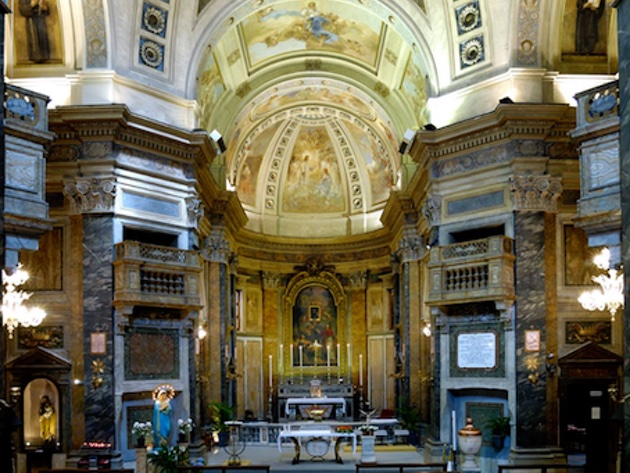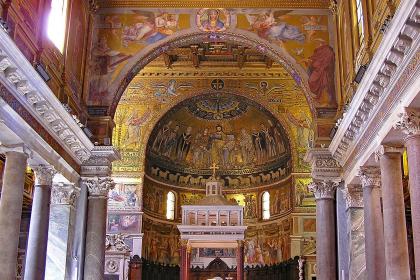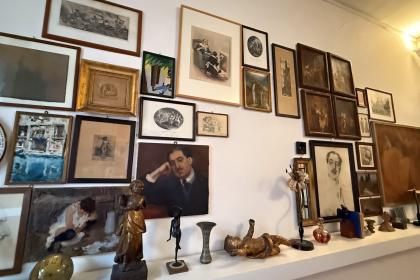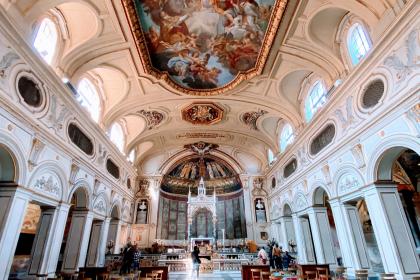
The church stands in the Trastevere district and is mentioned for the first time at the beginning of the 12th century in a Bull of Pope Calisto II with the title of San Silvestro. In 1445, under Pope Sixtus IV, the name of Santa Dorotea was added, a young martyr beheaded in Caesarea of Cappadocia (Turkey) under the persecution of Diocletian (284-305). The relics of the Saint are currently kept in the urn under the main altar.
The building was radically renovated between 1750 and 1756 by Giovanni Battista Nolli, teacher of the young Piranesi and author of the "New Map of Rome", published in 1748, the first map of the city measured and represented with scientific accuracy.
The concave one-tier façade of the church is marked by high pairs of pilasters with Ionic capitals between which the entrance portal with arched tympanum opens. The interior has a single nave with six side chapels.
Both the nave and the transept are covered with a barrel vault frescoed with the Stories of Santa Dorotea and the Franciscan saints by Gaetano Bocchetti. In the apse there is the altarpiece depicting the SS. Silvestro and Dorotea worshipping the Virgin Mary, by Michele Bucci (17th century), inside which the painting of the Madonna del Divino Amore is inserted.
Photo credits: Courtesy of Church of SS. Sylvester and Dorotea Facebook site
The Basilica of Santa Maria in Trastevere

 Condividi
Condividi
Museum of Roma in Trastevere

 Condividi
Condividi
Basilica of Santa Cecilia in Trastevere

 Condividi
Condividi
Information
Mass times
Monday: 18.00Tuesday: 18.00Wednesday: 18.00Thursday: 18.00Friday: 18.00Saturday: 18.00Sunday and public holidays: 09.00 (suspended), 11.00, 18.00
Times may be subject to change, so please always contact the church
 Condividi
Condividi
Location
To find out about all accessibility services, visit the Rome accessible section.











































